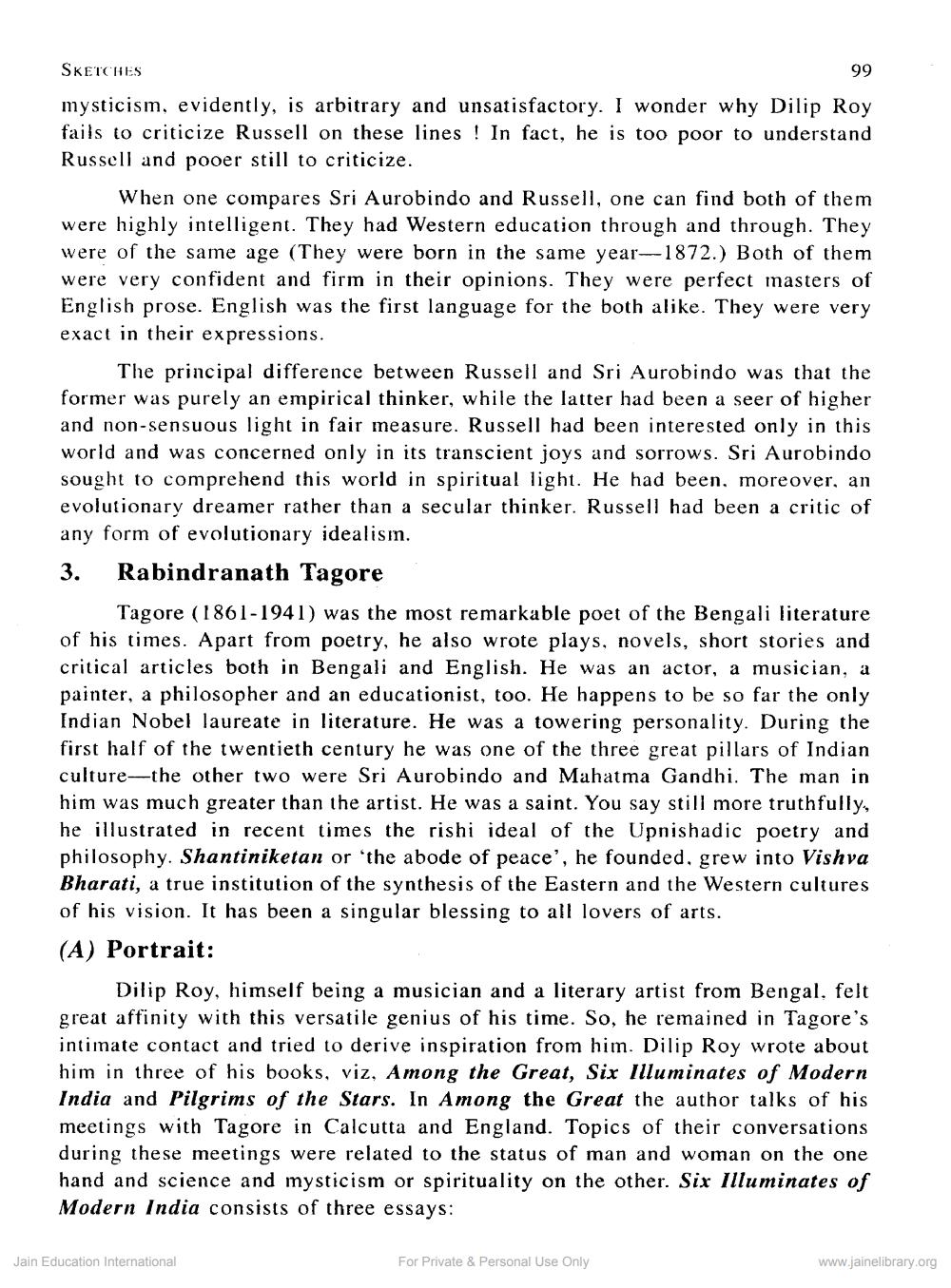________________
SKETCHES
99
mysticism. evidently, is arbitrary and unsatisfactory. I wonder why Dilip Roy fails to criticize Russell on these lines! In fact, he is too poor to understand. Russell and pooer still to criticize.
When one compares Sri Aurobindo and Russell, one can find both of them were highly intelligent. They had Western education through and through. They were of the same age (They were born in the same year-1872.) Both of them were very confident and firm in their opinions. They were perfect masters of English prose. English was the first language for the both alike. They were very exact in their expressions.
The principal difference between Russell and Sri Aurobindo was that the former was purely an empirical thinker, while the latter had been a seer of higher and non-sensuous light in fair measure. Russell had been interested only in this world and was concerned only in its transcient joys and sorrows. Sri Aurobindo sought to comprehend this world in spiritual light. He had been. moreover, an evolutionary dreamer rather than a secular thinker. Russell had been a critic of any form of evolutionary idealism.
3.
Rabindranath Tagore
Tagore (1861-1941) was the most remarkable poet of the Bengali literature of his times. Apart from poetry, he also wrote plays, novels, short stories and critical articles both in Bengali and English. He was an actor, a musician, a painter, a philosopher and an educationist, too. He happens to be so far the only Indian Nobel laureate in literature. He was a towering personality. During the first half of the twentieth century he was one of the three great pillars of Indian culture the other two were Sri Aurobindo and Mahatma Gandhi. The man in him was much greater than the artist. He was a saint. You say still more truthfully, he illustrated in recent times the rishi ideal of the Upnishadic poetry and philosophy. Shantiniketan or 'the abode of peace', he founded, grew into Vishva Bharati, a true institution of the synthesis of the Eastern and the Western cultures of his vision. It has been a singular blessing to all lovers of arts.
(A) Portrait:
Dilip Roy, himself being a musician and a literary artist from Bengal. felt great affinity with this versatile genius of his time. So, he remained in Tagore's intimate contact and tried to derive inspiration from him. Dilip Roy wrote about him in three of his books, viz, Among the Great, Six Illuminates of Modern India and Pilgrims of the Stars. In Among the Great the author talks of his meetings with Tagore in Calcutta and England. Topics of their conversations during these meetings were related to the status of man and woman on the one hand and science and mysticism or spirituality on the other. Six Illuminates of Modern India consists of three essays:
Jain Education International
For Private & Personal Use Only
www.jainelibrary.org




